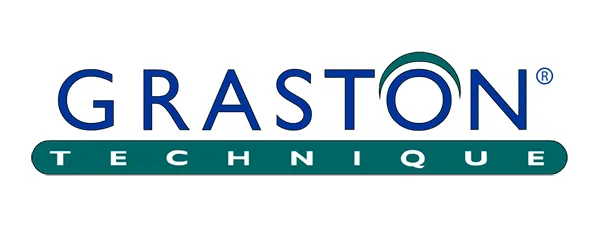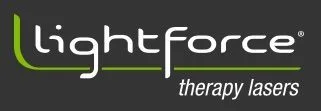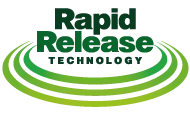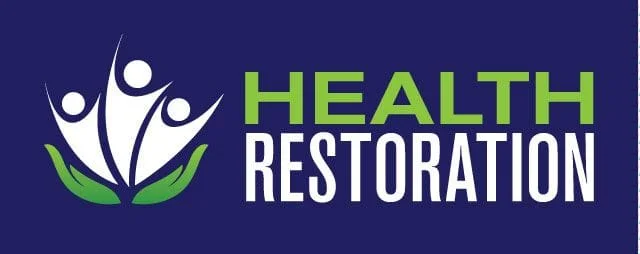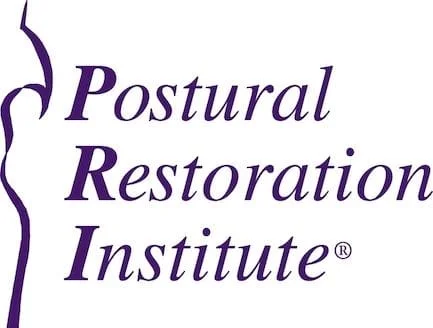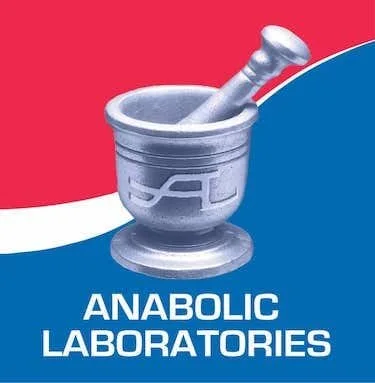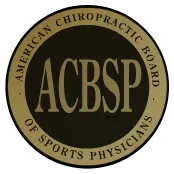Introduction

Aquatic Therapy offers outstanding benefits for pain modulation;
musculoskeletal rehabilitation, conditioning and training. It speeds the
physical recovery process and improves mental well-being by enabling
accelerated rehabilitation in cases of physical disability and
musculoskeletal injury.
Aquatic physical therapy is one of the fastest growing areas of
physical therapy and rehabilitation. The benefits have been recognized
since ancient times when whirlpools and hot springs were used to promote
healing and manage medical aliments.
What is Aquatic Therapy?
Aquatic therapy (AT) is the evidenced based and skilled practiced of physical therapy in an aquatic environment. AT includes but is not limited to treatment, rehab, prevention, health, wellness and fitness (conditioning) of clients in an aquatic environment. Conditions can be acute, transient or chronic.
Bates A., Hanson N. Aquatic Exercise Therapy. Philadelphia. W. B. Saunders & Company, 1996.
Tovin, B. J., Wolf, S. L., Greenfield, B. H., et al. Comparison of the effects of exercise in water and on land on the rehabilitation of patients with intra-articular anterior cruciate ligament reconstructions. Phys. Ther. 74 (8): 1994.
Hence, Aquatic Therapy exercise is the application of therapeutic exercise that occurs in the medium of water. The concept is simple. The results are real. Water provides buoyancy and viscosity. Buoyancy aids the patient’s movement while resisting gravity. Impact is minimal. Viscosity, the thickness of water, produces 3-dimensional resistance to all movement. Simply put, it’s a lot harder to exercise in water than onland while, at the same time, water substantially lowers the chances of further injury or pain. The temperature and pressure of the water also assist with circulation and relaxation of muscles. Compression forces created by the water helps to reduce edema, or swelling, in the tissue. Warm water increases circulation to the injured body part. (Allison TG, Reger WE. Comparison of responses of men to immersion in circulating water at 40.0 and 41.5 degrees C. Aviation Space Environ.Med 1998;69:845-850); Smith DW, Clarren SK, Harvey MA. Hyperthermia as possible teratogenic agent. J Pediatri 1978; 92:878-883)
The benefits Aquatic Therapy: Scientific Foundation and Applications in Clinical Rehabilitation
Numerous studies have reported the physiological benefits of aquatic therapy in the management of connective tissue injury and rehabilitationin humans. (Evans et. Al 1978, Gleim & Nicholas 1989, Migita et al 1994, Hotta et al 1995, Hall et al 1998, Shimizu et al., 1998; Shono et al., 2000, 2001 ab)
Chun Yang et al. have shown in research that mechanical tensile stimulation can significantly improve stem cell proliferation activity
in the fascia connective tissue. This could be one mechanism for the effectiveness of manual therapy. Water has the capacity to exert
three-dimensional (multi-planar) forces on objects moving in it. The eccentric component of these forces is highly effective in the
rehabilitation process. Eccentric loading on muscle and tendon (connective tissue) physiologically enhances production (growth) and
strength of these connective tissues through the process of mechano-transduction, microcirculation and growth differentiation
factor/hormonal response (Khan KM et al 2009, Ohberg L et al 2004, Roig Met al 2009, Wood, T.O., et al.1988, Heinemeier KM et al 2007). This eccentric characteristic of water forces on a moving body can be very effective on the body “fascial net” which architecture design response according to the direction of strain loading applied to it (Chaitow, 1988; Blechschmidt, 1978). Connective tissue has the inherent ability that it’s a highly adaptive tissue. The fibroblast within the tissue is able to adjust its matrix remodeling capacity so the overall tissue architecture will response to the load demands (Kjaer et al.2009).

Exercise in water has the advantage of allowing a patient, unable to perform land-based exercises, to begin exercising sooner than otherwise possible. Aquatic therapy allows early weight bearing by unloading the weight and stress on the joints while providing supportive buoyancy to muscles. There is much evidence to show that lack of movement promotes the development of additional cross-links in fascial tissue which leads to a decrease in its elastic properties (schleip R. et al., Jarvinen et al, 2002, wood et al. 1988). Hence the need for reduce sedentary life style and early movement in rehabilitation.
In a resistant but supportive aquatic environment the patient’s muscular, proprioceptive and endurance activities can be increased
according to their individual level of tolerance, confidence and healing. The body “fascial net is richly enervated with sensory nerves,
including proprioceptive receptors, multimodal receptors and nociceptive nerve endings (Schleip R et. al. 2005 & 2003, Mense 1998 &
2010). Strong evidence exist to show that a an increase in local proprioception can significantly lower myofascial pain ( Moseley et al.
2008; Taimela et al.; 1999; Lambertz et.al. 2006). If the body “fascial net” is one of the most highly innervated sensory organs then this
evidence could help prove the reports of pain relief or healing feeling from ancient baths were not just a myth but quite real.
Aquatic therapy offers patients a total exercise program that includes activities for cardiovascular conditioning, flexibility,
strength, muscle endurance, muscular relaxation and post exercise recovery methods.
Aquatic therapy is an efficient and safe way to treat some diseases and maintain health and wellness.
Combining Aquatic Physical Therapy with standard, land-based therapy shortens the disability period.
Aquatic therapy is used in the treatment of:
- Arthritis & fibomyalgia
- Sports injuries
- Burns
- Spasticity
- Ankylosing Spondylitis
- Musculoskeletal/connective tissues disorders
- Spinal cord injuries
- Stroke with paralysis
- Conditioning and wellness
- Post exercise recovery
- Obesity
From a historically sense, many ancient civilization used water (hot or cold) for comforting pain and treating diseases. Hippocrates
prescribed hot springs for cure. Hot springs improve health by increasing circulation is a long accepted fact but there may be much
more to this ancient belief.
There is an extensive scientific research base supporting aquatic therapy from within the basic science and clinical science literature.
Because of its wide margin of therapeutic safety and clinical adaptability of its medium, “water”, aquatic therapy is a versatile and
useful tool in the rehabilitation toolbox.
Submitted by:
Dr. Wilbour Kelsick
Copyright 2010 © Clinical Director of MaxFit Movement Institute. Inc.
Medical IST Staff- Athletics Canada –Canadian Olympic Team
References
- Awbrey B. J., Dye K. K. Plunging into aquatic exercise: Walking in Water. Training Conditioning, 1996.
- Baretta R., Robergs, R. Physiological Adaptations to a 14 Week Deep Water Exercise Program. Aquatic Physical Therapy Report: Vol. 3, 1995.
- Bates A., Hanson N. Aquatic Exercise Therapy. Philadelphia. W. B. Saunders & Company, 1996.
- Tovin, B. J., Wolf, S. L., Greenfield, B. H., et al. Comparison of the effects of exercise in water and on land on the rehabilitation of
- patients with intra-articular anterior cruciate ligament reconstructions. Phys. Ther. 74 (8): 1994.
- Bates A., Hanson N. Aquatic Exercise Therapy. Philadelphia. W. B. Saunders & Company, 1996.
- Blechschmidt, E., 1978. In: Charles, C. (Ed.), Biokinetics and Biodynamics of Human Differentiation: Principles and Applications.Thomas
- Pub Ltd, Springfield, Illinois.
- Brennan, D. K. Aqua running, no pain, much gain. Master Sports. 1992.
- Chaitow, L., 1988. Soft-tissue Manipulation: A Practitioner’s Guide to the Diagnosis and Treatment of Soft-tissue Dysfunction and Reflex
- Activity. Healing Arts Press, Rochester, Vermont
- Fix, James D. (2002). Neuroanatomy. Hagerstown, MD: Lippincott Williams & Wilkins. pp. 127. ISBN 0-7817-2829-0.
- Jarvinen, T.A., Jozsa, L., Kannus, P., Jarvinen, T.L., Jarvinen, M., 2002. Organization and distribution of intramuscular connective tissue
- in normal and immobilized skeletal muscles. An immunohisto chemical, polarization and scanning electron microscopic study. Journal of Muscle Research and Cell Motility 23, 245e254.
- Kjaer, M., Langberg, H., Heinemeier, K., Bayer, M.L., Hansen, M., Holm, L., Doessing, S., Kongsgaard, M., Krogsgaard, M.R., Magnusson,
- S.P., 2009. From mechanical loading to collagen synthesis, structural changes and function in human tendon. Scandinavian Journal of Medicine & Science in Sports 19, 500e510.
- Lambertz, D., Hoheisel, U., Mense, S., 2006. Distribution of synaptic field potentials induced by TTX-resistant skin and muscle
- afferents in rat spinal segments L4 and L5. Neuroscience Letters 409, 14e18.
- Magnusson, S.P., Langberg, H., Kjaer, M., 2010. The pathogenesis of tendinopathy: balancing the response to loading. Nature Reviews
- Rheumatology 6, 262e268.
- Mense S.; D.G Simons; Understanding and measurement of muscle tone a related to clinical muscle pain( 1998) published in Pain (1998) 75, 1-17
- Mense S; T Taguchi, J.Tesarz: The Thoracolumbar Fascia as a source of Low back pain: (7.2) Abstract from oral presentation 2010 Fascia
- research course University Ulm.
- Moseley, G.L., Zalucki, N.M., Wiech, K., 2008. Tactile discrimination, but not tactile stimulation alone, reduces chronic limb
- pain. Pain 137, 600e608.
- Napoletan, J. Aquatic Therapy: Overview. Rehab and Therapy Products Review. Jan/Feb, 1995. .
- Newman, D.J. Moving Through Fluids. Biomechanics. May, 1995.
- Robles-De-La-Torre G (2006). “The Importance of the Sense of Touch in Virtual and Real Environments”. IEEE Multimedia 13 (3): 24–30.
- doi:10.1109/MMUL.2006.69.
- Robles-De-La-Torre G, Hayward V (2001). “Force can overcome object geometry in the perception of shape through active touch”. Nature 412 (6845): 445–8. doi:10.1038/35086588
- Schleip R, Klingler W, et al.; Active fascial contractility: fascia maybe be able to contract in smooth muscle- like manner and thereby
- influence musculoskeletal dynamics. Med Hypotheses 2005; 65(2): 273-7
- Sherrington CS (1907). “On the proprioceptive system, especially in its reflex aspect”. Brain 29: 467–85. doi:10.1093/brain/29.4.467.
- http://brain.oxfordjournals.org/cgi/reprint/29/4/467.
- Taimela, S., Kankaanpa¨a¨, M., Luoto, S., 1999. The effect of lumbar fatigue on the ability to sense a change in lumbar position. A
- controlled study. Spine 24, 1322e1327.
- Templeton, M.S., Booth, D. L., O’Kelly, W. D. Effects of Aquatic Therapy on Joint Flexibility and Functional Ability in Subjects with
- Rheumatic Disease. JOSPT 23 (6): 1996.
- The Properties of Water and Their Effect on Aquatic Therapy. Athletic Therapy Today. 1 (2): 1996.
- Tovin, B. J., Wolf, S. L., Greenfield, B. H., et al. Comparison of the effects of exercise in water and on land on the rehabilitation of
- patients with intra-articular anterior cruciate ligament reconstructions. Phys. Ther. 74 (8): 1994.
- Verstegen, M. Plunging into aquatic exercise: Underwater speed. Training & Conditioning, 1996.
- Voss, D. E., Ionta, M.K., Myers, B.J. Proprioceptive neuromuscular facilitation patterns and techniques. Philadelphia, Harper and Row
- Publishers, 1985.
- Wilder, R. P., Brennan, D., Schotte, D. E. A Standard Measure for Exercise Prescription for Aqua Running. Am J Sp Med 21 (1): 1993.
- Bernhardsson S. Klintberg IH, and Wwndt GK. Evaluation of an exercise concept focusing on eccentric strength raining of the rotator
- cuff for patients with subacromial impingement syndrome. Clin Rehabil 25:69-78, 2011.
- Camargo, PR, Avila MA, Alburquerque-Sendin F, Asso NA, Hashimoto LH, and Salvini TF Eccentric training for shoulder abductors improves pain,function and isokinetic performance in subjects with shoulder impingement syndrome: A case series. Rev Bras Fisioter 16: 74-83, 2012.
- Heinemeier KM, Olesen, JL, Schjerling P. Haddad F. Langberg H, Baldwin KM, and Kjaer M. Short-term strength training and the expressionof myostatin and IGF-I isoforms in rat muscle and thedon: Differential effects of specific contraction types. J Appl Physiol 102: 573-581, 2007.
- Holmgren T, Bjornsson Hallgren H, Oberg B, Adolfsson L, and Johansson K. Effect of specific exercise strategy on need for surgery in
- patients with subacromial impingement syndrome. Randomized controlled study. BMJ 344: e787, 2012.
- Jonsson P, Wahlstrom P, Ohberg L, and Alfredson H, Eccentric training in chronic painful impingement syndrome of the shoulder:
- Results of a pilot study. Knee Surg Sports Traumatol lArthrosc 14: 76-81, 2006.
- Khan KM and Scott A.Mechanotherapy: How physical therapists’ prescription of exercise promotes tissue repair. Br J Sports Med 43:
- 247-252, 2009.
- Ohberg L, Loentzon R, and Alfredson H. Eccentric training in patients with chronic Achilles tendinosis: Normalised tendon structure
- and decreased thickness at follow up. Br J Sports Med 38: 8-11, 2004.
- Roig M, O’Brien K, Kirk G, Murray R, McKinnon P, Shadgan B, and Reid WD. The effects of eccentric versus concentric resistance training on muscle strength and mass in healthy adults: A systematic review with Meta-analysis. Br J Sports Med 43: 556-568, 2009.
- Wood, T.O., et al., 1988. The effect of exercise and anabolic steroids on the mechanical properties and crimp morphology of the rat
- tendon. American Journal of Sports Medicine 16, 153e158.
Related posts:
The Effectiveness of Exercise for the Management of Musculoskeletal Disorders and Injuries of the Elbow, Forearm, Wrist, and Hand: A
- Systematic Review by the Ontario Protocol for Traffic Injury Management (OPTIMa) Collaboration
- Evaluation and Management of Breathing Pattern Dysfunction in Spine Rehabilitation
- Republish of Postpartum Osteitis Pubis Treated Successfully with Shockwave Therapy: A Case Report
- Chiropractic Management of Sciatica Following L3-S1 Laminotomies, Foraminotomies, and Decompression with Instrumentation
- Adjunctive Therapies to the Adjustment Successful Ankle Sprain Management














